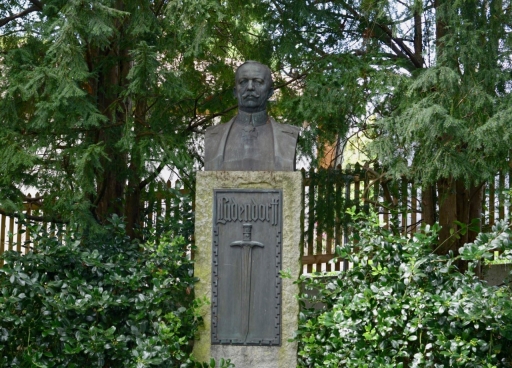A Centenary News glance at key events in the closing days of the Great War, as the Ottoman and Austro-Hungarian Empires stopped fighting, and Germany too edged towards an armistice.
October 24
Start of the Battle of Vittorio Veneto, an Italian-led offensive against the collapsing armies of Austria-Hungary. Exactly a year earlier, the Central Powers had defeated Italy at the Battle of Caporetto, allowing them to push into the Veneto region from the borders of Slovenia. Austria-Hungary attempted to capitalise on its gains in June 1918, only to be held on the Piave front by a revived Italy army under its new commander, General Armando Diaz. In October, Diaz struck back, with Allied support, advancing rapidly. The disintegrating Austro-Hungarian Empire sought an armistice.
October 26
General Erich Ludendorff, supremo of the German war effort with Field Marshal Hindenburg, was forced to resign amid indications that he planned to resume the offensive on the Western Front.
In late September, combined Allied attacks in France and Flanders, coupled with the collapse of Bulgaria, had convinced Hindenburg and Ludendorff of the need for a ceasefire. The Hindenburg Line, the German Army’s principal fortification on the Western Front, was breached on September 29. See Central Powers start to break.
On October 6, a new German government requested an armistice through President Wilson of the United States on the basis of his Fourteen Points. With tough terms emerging in a series of diplomatic notes between Washington and Berlin, Ludendorff was poised to order a new offensive, prompting his replacement by General Wilhelm Groener.
October 30: Turkey out of WW1
The Ottoman Empire, after Bulgaria, was the second of the Central Powers to exit the First World War. The Armistice of Mudros was concluded on Lemnos, a Greek island which had been used as an Allied base for the ill-fated Gallipoli campaign in 1915. In September 1918, the Allies’ defeat of Bulgaria on Salonika Front left Turkey exposed. The Ottoman Army in Palestine had been destroyed at the Battle of Megiddo. Damascus fell on October 1. The government that had taken Turkey into the First World War in October 1914, resigned. Approaches for an armistice began under a new Grand Vizier, or Prime Minister, Ahmed Izzet Pasha. Major General Charles Townsend, the British commander taken prisoner after the siege of Kut in 1916, was released as an intermediary.
 The proclamation of the armistice with Turkey is read in Baghdad, 2 November 1918 (Photo © IWM Q 56808)
The proclamation of the armistice with Turkey is read in Baghdad, 2 November 1918 (Photo © IWM Q 56808)
In Germany, domestic unrest intensified. Crews of the Imperial Navy’s High Seas Fleet mutinied against orders for a final battle against Britain in the North Sea. Sailors joined forces with protestors in Kiel, proclaiming revolution with a soldiers’ and workers’ council, or soviet, following the example of Russia’s Bolshevik revolutionaries.
November 3: Austria-Hungary agrees armistice
Austria-Hungary’s involvement in the Great War ended with the Armistice of Villa Giusti. Its exhausted forces were falling back under the weight of Italy’s Vittorio Veneto offensive. On the day of the armistice, an Italian naval force entered the Adriatic port of Trieste, It had been promised to Italy by the Allies in 1915, in return for entering WW1 against the Central Powers.

20,000 Italian, Austrian, Czech and Hungarian soldiers of the Great War, known and unknown, rest at Casteldante Monumental Shrine in Rovereto, Italy (Photo: Centenary News)
On 28 July 1914, the Great War had begun with Austria- Hungary’s declaration of war on Serbia, in response to Archduke Franz Ferdinand’s assassination in Sarajevo. It was ending with the break-up of the Habsburg Empire, as Czechs, Slovaks, Hungarians, Poles, Croats, Serbs and Slovenes demanded independence.
November 4
Now fighting alone, Germany faced a new attack in France. The Allies began a major offensive across the River Sambre, opening the way into central Belgium. New Zealand troops captured the walled town of Le Quesnoy, using ladders to scale its 17th century ramparts. Wilfred Owen, the British war poet and soldier, was killed during the crossing of the Sambre-Oise Canal.
November 7
German negotiators crossed the French lines to start ceasefire talks. The delegation was led by Matthias Erzberger, a leading member of the new coalition government in Berlin, and a critic of the war.
November 9: Kaiser Wilhelm II ousted
Chancellor Max von Baden unilaterally announced the Kaiser’s abdication as revolutionary uprisings spread across Germany. Wilhelm II, who was at army headquarters in Belgium, was reluctant to give up his throne. But warned that his troops would no longer fight for him, he left for exile in the Netherlands.
November 11: The Guns Fall Silent
The Armistice ending the First World War was signed at 05.15 in Marshal Foch’s train, which had been brought to a secluded line in the Forest of Compiègne. German hopes of a negotiated truce were disappointed. Presenting the terms, the Allied Supreme Commander had warned the war would go on if they weren’t accepted. Germany was required to evacuate all occupied territory, including the disputed province of Alsace-Lorraine, under German rule since the end of the Franco-Prussian War in 1871. The left bank of the Rhineland also had to be demilitarised. The German Navy’s surface and submarine fleets would be interned pending a decision on their fate.

The ceasefire started at 11 o’clock on the morning of November 11. Even so, the fighting continued on the Western Front in the final hours. The US Army was still in action on the Meuse. British and Canadian troops closed in on Mons, scene of the British Expeditionary Force’s first clash with the advancing German Army on 23 August 1914. The Canadians entered the city shortly before the Armistice came into effect.
Compiled by CN Editor
Images courtesy of Susi Traenkner – Erich Ludendorff’s grave in Tutzing, Bavaria
Imperial War Museums © IWM Q 56808 – Armistice proclamation in Baghdad
Centenary News – Casteldante Shrine & Big Ben
